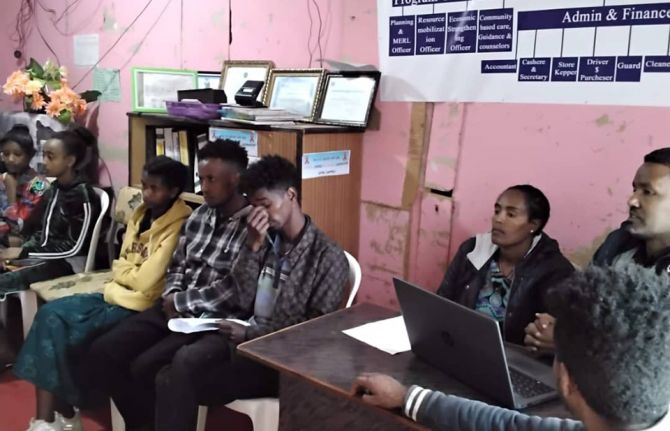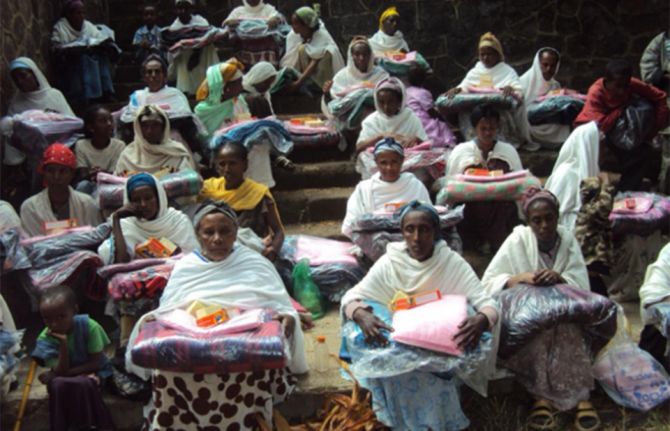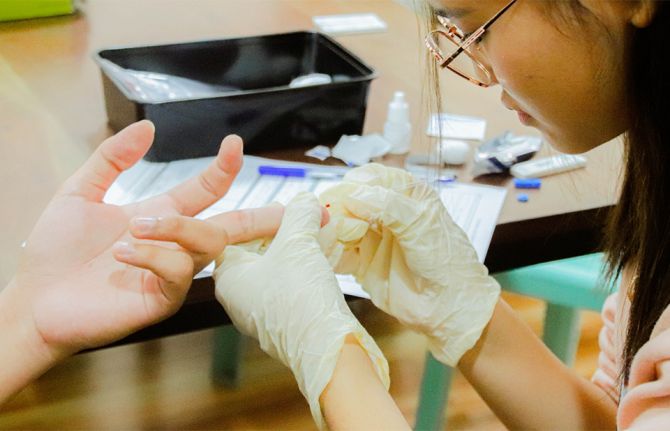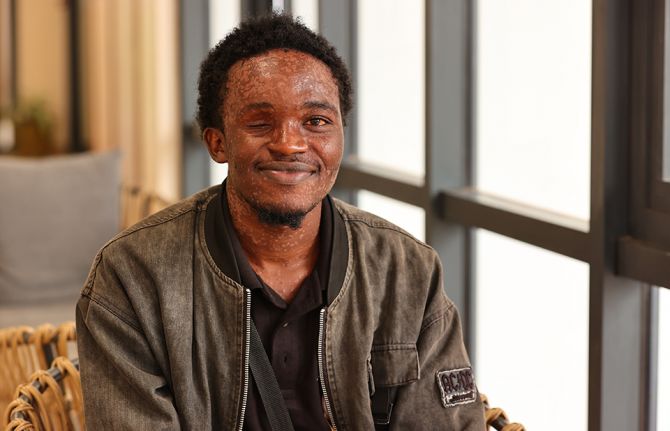

Feature Story
The Breaking Point: A Story from Ethiopia
06 May 2025
06 May 2025 06 May 2025In April 2025, silence fell over Bahir Dar. Once a lifeline for people living with HIV, key populations, and young people—as the US funding pause began to bite. Funding cuts disrupted services. A few held on without salaries but eventually, even they stopped showing up. Confused and anxious clients arrived to find the gates closed. Some waited. Others turned away.
The crisis quickly spread from Bahir Dar, where key population programmes came to a halt. Outreach workers, who had built trust door by door, were laid off. Fear took hold. Clients asked for extra medication, unsure whether services would return. Peer support groups vanished, and with them, protection against stigma and transmission.
"I often find myself overwhelmed with stress,” said a woman from a women led association. “If the medicine and other services stop coming, where will I go? I simply don’t have the financial means to afford the treatment I need.”
The data collected by the women-led association of people living with HIV is stark. For two months, no new clients have been enrolled in PrEP, the prevention prophylaxis taken orally that protects from HIV infection.
“One of my biggest concerns is the fear of not having access to condoms,” said a case manager from the women led association. “Without them, we know HIV can spread much more easily.”
In the face of this collapse, the UNAIDS Ethiopia team visited Bahir Dar and surrounding towns to document the impact firsthand. They spoke with organizations, youth groups, and people living with HIV. They visited what remained of the services and listened to voices that too often go unheard—adolescents, mothers, peer educators—people still holding the line, even as systems crumbled around them.
“I worry deeply about the spread of HIV,” said a female member. “Will medicine still be available? Will we still have access to viral load testing? If condoms run short, we risk seeing the virus continue to spread, along with other infectious diseases.”
"Without a financial budget, our members are left without the basics they need to survive; no food, medical care, or even hope," said the association manager. "They have families, they have children, and they rely heavily on this support. It would make a huge difference if members could access free medical treatment and hospital services. Today, many can't even afford one meal a day. Their health is deteriorating; their children are suffering. What they need most is dignity, food, and a fighting chance."
“There’s a real fear that if funding ends, everything else will follow—medicines, condoms, even access to medical personnel,” said a member from the women led association. “Without these, proper care becomes almost impossible.”
And yet, even in collapse, communities are refusing to give up.
Young volunteers have stepped in. They have formed informal networks, checked in on peers, and created WhatsApp groups to stay connected. Mothers banded together to support their children’s treatment. Youth collectives used community radio and shared airtime to spread critical information. Where formal systems failed, communities built their own safety nets.
Bahir Dar was both a breaking point and a wake-up call. It laid bare the fragility of systems built around a single funding stream—when the money stopped, so did the services, the trust, and the hope.
This crisis makes clear that resilience must be built in, not left for later. Emergency preparedness must be a core part of national HIV responses. Community-led organizations must be recognized as essential. And youth-led innovation must be scaled up—because it is young people who keep the response alive when everything else falls apart.
"Resilient communities are the backbone of the HIV response," said Tina Boonto, UNAIDS Country Director for Ethiopia. "When systems collapse, it is communities that hold the line. Their leadership, courage, and innovation are not optional—they are essential. Building lasting responses means putting communities first, not as an afterthought but as the foundation of everything we do."
HIV must remain central to humanitarian, development, and recovery agendas. The intertwined challenges of conflict, displacement, gender-based violence, and HIV demand integrated, people-centered solutions. This won’t happen if HIV is treated as an afterthought or reduced to clinical care alone.
The story of Bahir Dar shows what happens when systems fail, and what people do in their absence. It is a testament that resilience is forged in crisis by those most often left behind who still find ways to move forward.



